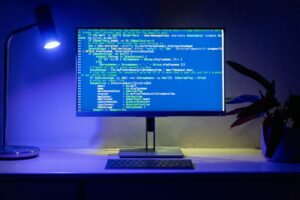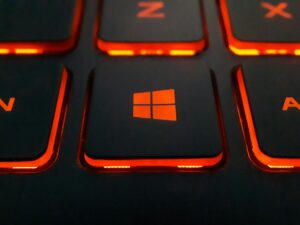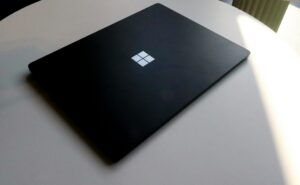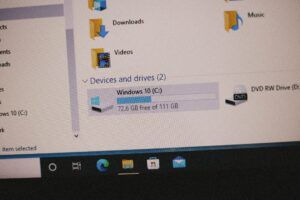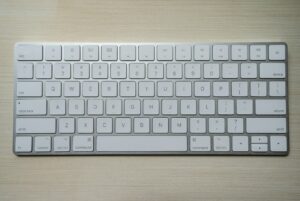Using Windows to Map Network Drives: How to Do It

Using Windows to Map Network Drives: How to Do It
In the event that you often use shared files or folders on a different computer, a server, or a NAS (Network-Attached Storage), it may be cumbersome to manually browse to every single one of these locations each time. Alternatively, you may map a network drive in Windows, which causes a drive letter (such as Z: or X:) to be assigned to a folder that is shared over a network. This makes it just as simple to access as the hard disks that are located locally.
Can You Explain What It Means to Map a Network Drive?
Creating a shortcut in File Explorer that leads straight to a shared folder on another device is the result of mapping a network drive inside File Explorer. If you want to avoid inputting a network path (such as \\Server\SharedFolder) each time, you may just access the mapped drive under This PC.
This is especially helpful in working environments, educational institutions, and home networks, all of which need numerous users to have dependable and speedy access to shared data.
In order to map a network drive, there are few prerequisites.
In order to get started, be sure that:
- The device that is hosting the shared folder is linked to the same virtual private network (VPN) or local network as you are.
- On either the host computer or the network attached storage device, file sharing is enabled.
- For example, you are aware of the network path, which is \\ComputerName\SharedFolder.
- Please ensure that you have the right login and password in order to access the restricted shared resource.
Open File Explorer as the first step.
- When you want to launch File Explorer, press Win + E.
- Choose this computer from the panel on the left.
Initialize the Network Drive Mapping Wizard as the second step.
The… (More) menu or the Computer tab, depending on the version you are using, should be clicked at the very top of File Explorer.
- Choose the Map network drive option.
- There will be a new window that opens up with mapping choices.
Name a drive letter.
Select a drive letter that is at your disposal from the list that drops down (for example, Z:).
Within File Explorer, this letter will serve as a representation of the shared folder.
Enter the folder path.
The network path should be typed in the Folder field using the following format:
The shared folder named “ComputerName”
It is essential to keep in mind that the information provided is not exhaustive and that there are other factors that need to be taken into consideration.
- \\Documents in Office Pro Plus
- In the event that you are unsure of the precise route, you may search for the accessible network computers by clicking Browse.
Configuring Additional Options is the fifth step.
Both of the following checks are very important:
“Reconnect at sign-in” ensures that the mapped disk is accessible even after your computer has been restarted.
This feature allows you to connect using various credentials, allowing you to input a new username and password if the shared folder demands it.
Authenticate Yourself, If Necessary
When you attempt to access the network share, you will be required to provide your credentials. For the shared computer or network attached storage (NAS), provide the login and password. For your own convenience, you have the option of remembering them.
Access Your Mapped Drive.
The newly connected drive will be shown in This PC under Network Locations with the letter that you set to it after it has been linked. Files may now be opened, copied, and saved in the same manner as if they were stored on a local disk.
How to Terminate a Mapped Drive’s Connection
If the mapped disk is no longer required, you should:
- Start up the File Explorer.
- To access the mapped disk, right-click on it under This PC.
- Use the Disconnect option.
- The shortcut is removed in this manner, and the original shared folder is not impacted in any way.
- Command Prompt or PowerShell may be used to map drives, which is an advanced method.
- Using commands, network disks may also be mapped, which is a feature available to power users.
- Applying the command “net use Z: \\ComputerName\SharedFolder /persistent:yes” to the Command Prompt tool
Z: is the letter of the drive.
/persistent:yes means to rejoin after restarting the app.
Create a new PowerShell drive with the following parameters: New-PSDrive -Name “Z” -PSProvider FileSystem -Root “\\ComputerName\SharedFolder” -Persist
Guidance for Troubleshooting
The error message “Network path not found”: Check to ensure that the host computer is connected to the internet and that file sharing is turned on.
- Refusing to provide access: Verify that the permissions on the shared folder are ok.
- The drive is unable to reconnect: Take a look at erasing and remapping with the Reconnect at sign-in feature turned on.
- In order to enable file sharing on the host computer, temporarily deactivate or adjust the Windows Firewall. This will allow access to the file sharing feature.
At what point should you map a drive on a network?
in order to speedily access folders that are shared for projects at a workplace.
- to establish a connection to a network-attached storage (NAS) disk at home for the purpose of storing media.
- to simplify the process of working together in contexts with many users.
- avoiding the need to continually type out lengthy network routes.
You may simplify the process of accessing shared folders in Windows by mapping a network drive. This is a powerful and straightforward method. It is beneficial to assign a drive letter since it helps save time and enhances productivity, regardless of whether you are working in a business environment, operating a home office, or just exchanging files with family. You will be able to handle network storage like an expert if you follow the methods that have been outlined above or if you use command-line tools for automation.
